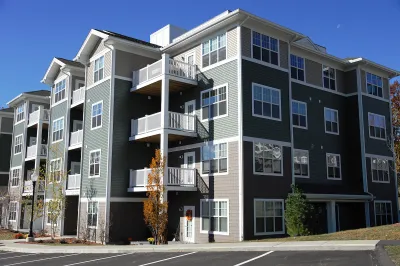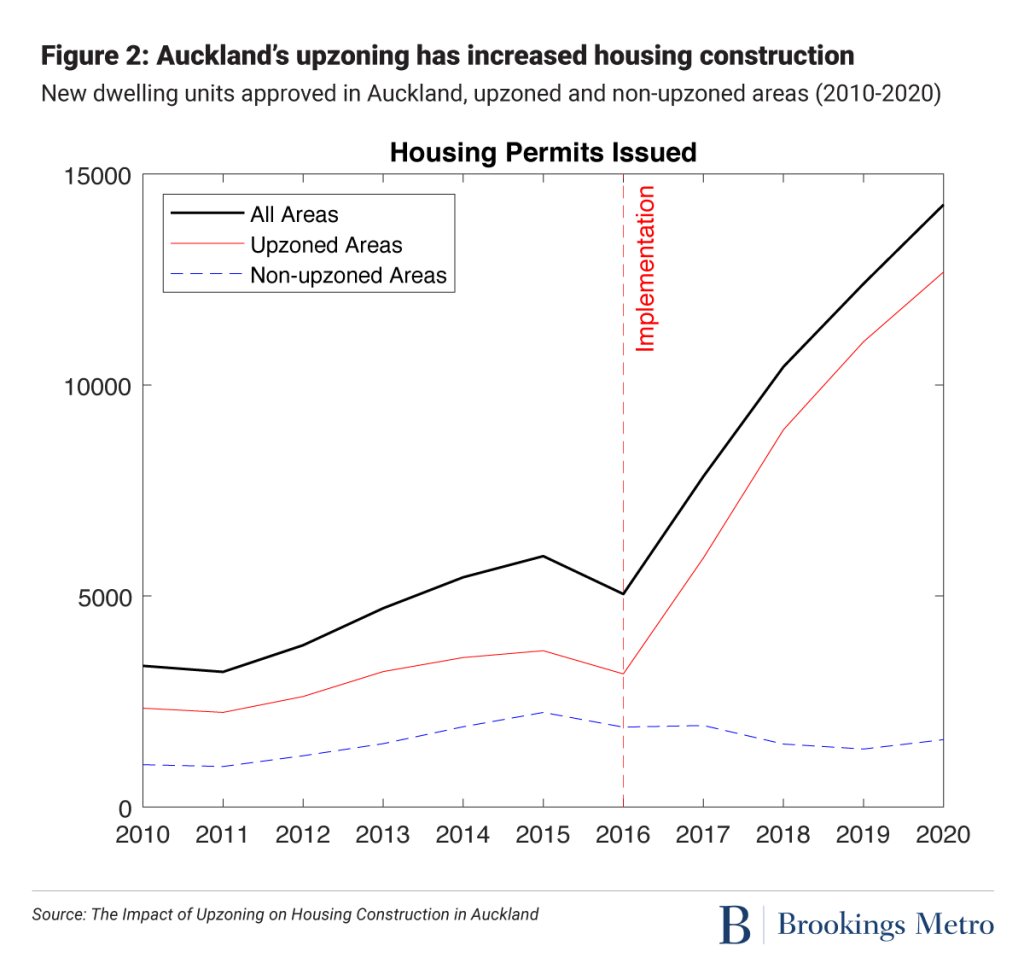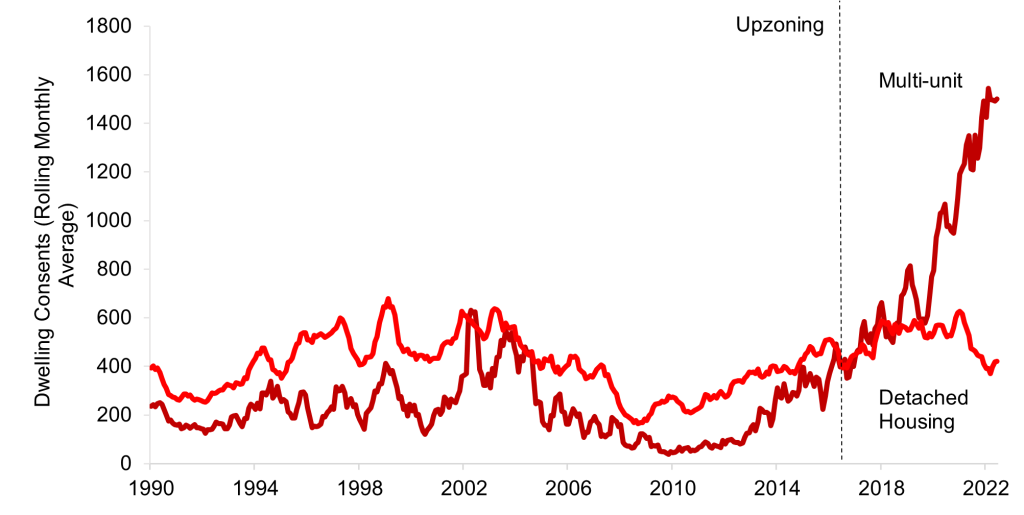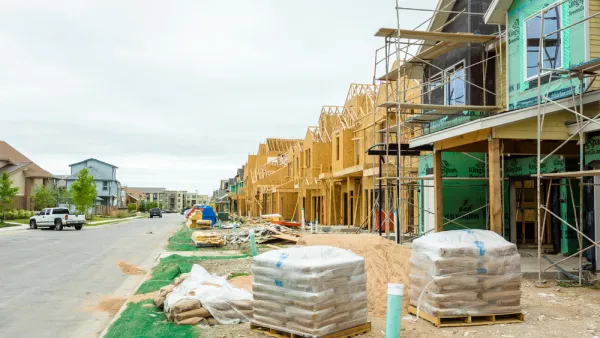There are new controversies concerning how upzoning affects housing supply and affordability, and new research to help planners understand these issues.

A controversy in planning concerns the degree that upzoning can increase affordability.
I reviewed this issue two years ago in Planetizen columns, The Housing Supply Debate: Evaluating the Evidence, and A Critical Review of 'Sick City: Disease, Race, Inequality and Urban Land', and in a Governing Magazine article, The Housing Affordability Recipe. Recent studies support the conclusion that broadly-applied upzoning that allows more compact housing types (townhouses, multiplexes, and multi-family) in multimodal neighborhoods, with complementary policies such as reducing parking minimums, can increase housing supply, drive down prices, and increase overall affordability.
This research has not prevented skeptics from arguing the opposite; that upzoning increases rather than reduces housing prices and reduces affordability. Such skepticism is understandable: housing prices tend to be higher in dense urban areas and a parcel's value tends to increase if it is upzoned. However, upzoning a large urban area has very different effect: it creates a competitive market for land prezoned for higher density housing which minimizes lane value increases, as discussed in UCLA Professor Shane Phillips' report, Building Up the "Zoning Buffer": Using Broad Upzones to Increase Housing Capacity Without Increasing Land Values.
Recent publications shed more light on these issues. NYU professors Vicki Been, Ingrid Gould Ellen and Katherine O’Regan just released Supply Skepticism Revisited, which updates their 2019 report, Supply Skepticism: Housing Supply and Affordability. They conclude that, "rigorous recent studies demonstrate that: 1) Increases in housing supply slow the growth in rents in the region; 2) In some circumstances, new construction also reduces rents or rent growth in the surrounding area; 3) The chains of moves sparked by new construction free up apartments that are then rented (or retained) by households across the income spectrum; 4) While new supply is associated with gentrification, it has not been shown to cause significant displacement of lower income households; and 5) Easing land use restrictions, at least on a broad scale and in ways that change binding constraints on development, generally leads to more new housing over time." However, they also conclude that upzoning alone cannot achieve affordability goals; it must be implemented with other policies,
Another study by the Urban Institute, Land-Use Reforms and Housing Costs: Does Allowing for Increased Density Lead to Greater Affordability? used an innovative research technique, machine-learning algorithms that read newspaper text, to identify where reforms increased or decreased allowed housing density, and estimated their impacts on housing supply and rents. They found that reforms that loosen restrictions are associated with a statistically significant increase in housing supply within three to nine years, consisting primarily of higher priced homes. Impacts on affordability were uncertain. Conversely, reforms that increase land-use restrictions and reduced allowed densities are associated with increased median rents and a reduction in units affordable to middle-income renters. This indicates to me that to increase affordability, upzoning should be implemented with policies that favor lower-priced housing, such as eliminating parking minimums and development fees for lower-priced units.
Another debate erupted in New Zealand when the Auckland Unitary Plan (the regional strategic plan) upzoned most residential neighborhoods. Analysis by researchers Ryan Greenaway-McGrevy and Peter Phillips, described in, New Zealand’s Bipartisan Housing Reforms Offer a Model to Other Countries, found that this resulted in a construction boom, which they illustrated with helpful graphs.

Economist Matthew Maltman, who analyzes the effects of upzoning in his webpage, Tracking the Revolution in Housing Policy, supports Greenaway-McGrevy and Phillips' findings in, Housing Supply in Auckland hits an Inflection Point.

A subsequent blog post by Cameron Murray and Tim Helm, "The Auckland Myth: There is no Evidence that Upzoning Increased Housing Construction," nitpicks Greenaway-McGrevy and Phillips' methodology and claims that “there is no evidence that upzoning increased construction.” Supply skeptics accept this as proof.
Greenaway-McGrevy produced an updated report, The Impact of Upzoning on Housing Construction in Auckland: Update and Extended Results that responded to Murray and Helm's criticism. Earlier this year Maltman posted, A Response to Murray and Helm on Auckland’s Upzoning, which points out errors and omission's in Murray and Helm's criticism. He state that "As far as I can tell, the extension paper deals with almost all of Murray and Helm’s concerns quite well. It shows that the original paper’s findings hold and are robust." and criticizes them for various omissions and biases that appear intended to discredit Greenaway-McGrevy and Phillips' research.
What does this mean for planners? It indicates that despite claims by skeptics, abundant credible research indicates that upzoning can increase housing supply and affordability, particularly if implemented with supportive policies such as parking development fees reforms that favor lower-priced housing development.
It also shows that this research will often be criticized. As described in my column, The Housing Supply Debate: Evaluating the Evidence, both freemarket advocates and supply skeptics tend to approach housing policy ideologically -- they are only interested in evidence that supports their preferred conclusions, and as Plaentizen editor James Brasuell described in, An Academic Debate with Very Real Consequences: Land Use Regulations and the Cost of Housing," they often severely misrepresent issues to score points. Planners must be prepared with better information.
FULL STORY: Supply Skepticism Revisited

National Parks Layoffs Will Cause Communities to Lose Billions
Thousands of essential park workers were laid off this week, just before the busy spring break season.

Retro-silient?: America’s First “Eco-burb,” The Woodlands Turns 50
A master-planned community north of Houston offers lessons on green infrastructure and resilient design, but falls short of its founder’s lofty affordability and walkability goals.

Delivering for America Plan Will Downgrade Mail Service in at Least 49.5 Percent of Zip Codes
Republican and Democrat lawmakers criticize the plan for its disproportionate negative impact on rural communities.

Test News Post 1
This is a summary

Test News Headline 46
Test for the image on the front page.

Balancing Bombs and Butterflies: How the National Guard Protects a Rare Species
The National Guard at Fort Indiantown Gap uses GIS technology and land management strategies to balance military training with conservation efforts, ensuring the survival of the rare eastern regal fritillary butterfly.
Urban Design for Planners 1: Software Tools
This six-course series explores essential urban design concepts using open source software and equips planners with the tools they need to participate fully in the urban design process.
Planning for Universal Design
Learn the tools for implementing Universal Design in planning regulations.
EMC Planning Group, Inc.
Planetizen
Planetizen
Mpact (formerly Rail~Volution)
Great Falls Development Authority, Inc.
HUDs Office of Policy Development and Research
NYU Wagner Graduate School of Public Service





























